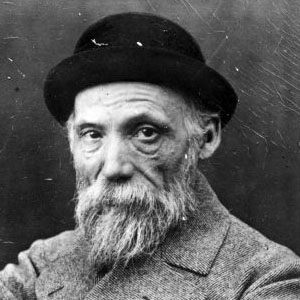
Neo-Impressionist Maximillian Luce was born in Paris on March 13th, 1858. Born to Louise-Joséphine Dunas and Charles-Désiré Luca, a railway clerk, the family lived in Montparnasse. Luce trained as a wood carver at the Ecole des Artes decoratifs and began studying engraving with Henri-Théophile Hildebrand in 1872. Continuing with this education, Luce started work in the shop of French engraver Eugène Froment in 1876. There he engraving for local magazines and international newspapers. Luce left Paris in 1877 and moved to London, returning to France once again in 1879. Shortly thereafter he was called into military service. While serving, Luce continued to practice engraving. It was during this service that he met Charles Emile Carolus-Duran. Luce worked in his studio and trained rigorously as a draftsman, eventually being introduced to some of the leading painters of the time. After being stationed in Brittany for two years, Luce, with the help of Carolus-Duran, is transferred back to Paris. Around the 1880’s, zincography was growing and as a result it was more and more difficult for engravers to get jobs. In 1883 when Luce left military service, he chose to concentrate on his painting instead. In 1887 Luce joined the Societe des Independants and participated in exhibitions, starting with the third spring show where he exhibited 7 works. One of his works was purchased by Paul Signac and Luce also caught the attention of Camille Pissaro, who in turn introduced him to Signac and Georges Seurat. Luce quickly joined up with the Neo-Impressionists. At the time, most of the Neo-Impressionists were political anarchists, and Luce joined them in this as well, contributing illustrations for a number of socialist magazines. Luce was even arrested and jailed in 1894 for 6 weeks due to his anarchist leanings. In 1934 he was elected president of the Société des Artistes Indépendants , but resigned in protest of their policies restricting entrance to Jewish artists. He met Ambroisine “Simone” Bouin in 1893 and she became his model, common-law wife and eventually wife. The pair had two children together, one of whom died, and adopted Simone’s nephew. Towards the end of his career, Luce moved back to a more traditional political stance as well as an Impressionist painting method.

